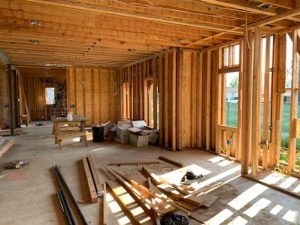Climate-Resilient Design: Preparing Properties for Extreme Weather
Welcome to the era of extreme weather events. From hurricanes and floods to wildfires and droughts, our world is experiencing an increase in the frequency and intensity of severe weather. These extreme weather events are not only taking a toll on human lives and infrastructure, but they are also revealing the vulnerabilities of our built environments. As we grapple with the challenges of climate change, it has become increasingly important to design properties that are resilient to extreme weather. In this article, we will explore the concept of climate-resilient design and the steps that can be taken to prepare properties for extreme weather.
Understanding Climate-Resilient Design
Climate-resilient design is an approach to design that aims to mitigate the impacts of extreme weather events on properties. It involves designing buildings, landscapes, and infrastructures that can withstand and adapt to the changing climate. The goal of climate-resilient design is not only to minimize damage to properties but also to ensure the safety and well-being of their inhabitants. This design approach takes into account not only the current weather conditions but also the projected future climate scenarios.
The Importance of Climate-Resilient Design
Over the past few decades, the world has witnessed an increase in the frequency and intensity of extreme weather events. According to the National Oceanic and Atmospheric Administration (NOAA), the United States alone has experienced 285 weather and climate disasters since 1980, with total damages exceeding $1.875 trillion. These figures are expected to rise in the coming years due to the effects of climate change. Therefore, it is crucial for properties to be designed with resilience in mind to minimize their vulnerability to extreme weather events.
Preparing Properties for Extreme Weather
Site Selection and Planning
The first step in designing a climate-resilient property is to carefully select the site and plan its layout. One of the key factors to consider is the potential hazards in the area such as flood zones, wildfires, and hurricanes. By avoiding these high-risk areas, the property can reduce its exposure to extreme weather events. Additionally, incorporating green spaces and open areas into the property’s layout can help reduce the risk of flood damage and provide natural cooling during heatwaves.
Building Envelope Design
The building envelope, which includes the roof, walls, and windows, plays a critical role in protecting a property from extreme weather. A well-designed building envelope can minimize the impact of high winds, heavy rain, and extreme temperatures. For example, using impact-resistant and energy-efficient materials can improve a property’s resilience to hurricanes and reduce its energy consumption. Proper insulation, air sealing, and ventilation can also help regulate indoor temperatures and reduce cooling and heating costs.
Green Infrastructure
Green infrastructure, such as green roofs, rain gardens, and permeable pavements, can help mitigate the impacts of extreme weather events. These nature-based solutions can reduce stormwater runoff, which can cause flooding and water damage. They can also provide shade and evaporative cooling, which can help lower the urban heat island effect. Incorporating green infrastructure into a property’s design can not only improve its resilience but also benefit the surrounding environment.
Renewable Energy Sources
One of the factors contributing to extreme weather events is the burning of fossil fuels, which releases greenhouse gases into the atmosphere. Therefore, transitioning to renewable energy sources, such as solar and wind power, is crucial in mitigating the impacts of climate change. By incorporating renewable energy sources into a property’s design, it can reduce its carbon footprint and become more self-sufficient in the event of power outages caused by extreme weather.
Resilient Design Features
There are several resilient design features that can be incorporated into a property to improve its resilience to extreme weather. These include elevated foundations to prevent flood damage, hurricane-resistant windows and doors, and backup power systems. These features can help a property withstand the impacts of extreme weather events and ensure the safety of its inhabitants.
In Conclusion
Climate-resilient design is essential in preparing properties for extreme weather events. By incorporating this approach into the design process, properties can reduce their vulnerability to the impacts of climate change and ensure the safety and well-being of their inhabitants. It is important for stakeholders in the construction industry to prioritize resilience in property design to mitigate the damages caused by extreme weather events and create a more sustainable future for our communities.









